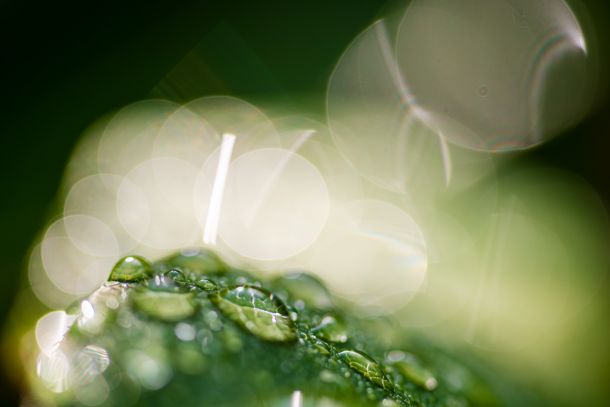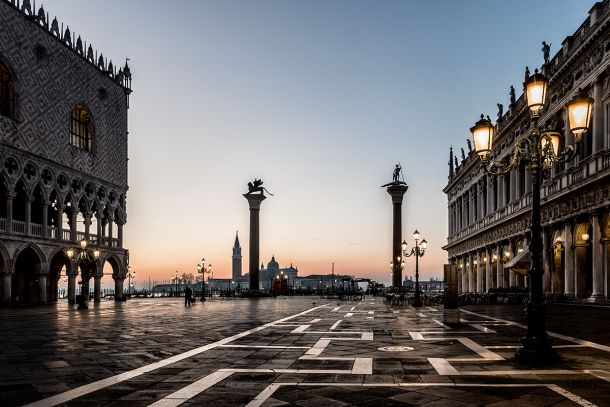Fine Art Wildlife Photography: When the Lens Transcends Science

Elephants and Kilimanjaro – Photo: © Lionel Maye
Two visions, two worlds: science or art?
Wildlife photography divides the world into two radically different camps. On one side, scientists document behaviors and species with rigorous precision. On the other, artists turn the animal into a subject of pure expression, seeking emotion over information. This fundamental distinction shapes not only the techniques used but also the value and purpose of each image. Explore these parallel worlds to understand how true fine art wildlife photography is born.
Summary
- Scientific vs Artistic Photography: Opposing Goals
- Wildlife Art: Turning Documentation into Emotion
- Contemporary Masters of Wildlife Art
- Artistic Techniques Specific to Wildlife Photography
- Emerging Talents in Fine Art Wildlife Photography
Scientific vs Artistic Photography: Opposing Goals
Scientific Wildlife Photography: Rigor and Documentation
Scientific wildlife photography favors information over emotion. Its main goal is to document species’ behaviors, anatomies, and habitats with precision. Each image must offer verifiable documentary value.
Features of the scientific approach:
- Visual neutrality: neutral angles with no artistic interpretation
- Factual precision: every detail must be visible and authentic
- Natural context: unaltered environment, real-life conditions
- Minimal post-processing: technical correction without creative changes
- Informative caption: species, behavior, geographic location
This style is aimed at biologists, ecologists, and scientific publications that require reliable visual proof for their research.
Fine Art Wildlife Photography: Emotion and Interpretation
In contrast, fine art wildlife photography transforms the animal into a subject of artistic expression. The goal is no longer to inform, but to move, to reveal hidden beauty or convey a personal message.
Features of the artistic approach:
- Subjective vision: creative interpretation by the photographer
- Aesthetic exploration: expressive composition, light, and framing
- Emotional message: conveying a feeling or concept
- Creative post-processing: artistic amplification of the original image
- Visual storytelling: the animal becomes a character in a story
This approach targets art collectors, beauty lovers, and interior design spaces seeking emotional aesthetics.
Comparison Table of the Two Approaches
| Criteria | Scientific Approach | Artistic Approach |
|---|---|---|
| Main goal | Precise documentation | Creative expression |
| Target audience | Scientific community | Collectors and art lovers |
| Ethics of subject | Strict respect, non-disturbance | Controlled creative freedom |
| Image treatment | Minimal technical correction | Expressive post-processing |
| Artwork value | Conveyed information | Emotional and aesthetic impact |
| Excellence criteria | Accuracy and authenticity | Beauty and originality |
| Final use | Publications, studies, archives | Galleries, collections, décor |
Wildlife Art: Turning Documentation into Emotion
Artistic Intention: The Key to Transformation
The core difference between science and art lies in the photographer’s intent. The wildlife artist doesn’t merely capture—they interpret, elevate, and transfigure their subject.
Elements that define artistic intent:
- Personal vision: recognizable style and visual signature
- Compositional choices: bold framing, unexpected perspectives
- Technical mastery: creative use of light and motion
- Transcendent message: revealing a universal truth beyond the animal
The Animal as Metaphor
In wildlife art, the animal transcends its biological reality to become a symbol, metaphor, or emotional projection. An elephant may embody ancestral wisdom, a wolf reveal wild freedom, a bird symbolize spiritual elevation.
This metaphorical transformation fundamentally separates art from science: where the scientist sees behavior to analyze, the artist perceives emotion to express.
Contemporary Masters of Wildlife Art
Laurent Baheux: The Majestic Animal Portraitist
Laurent Baheux revolutionized wildlife photography by applying human portrait codes to African fauna. His close-up black and white frames reveal each animal’s personality, turning lions, elephants, and rhinos into contemplative individuals.
Baheux’s artistic signature:
- Intimate portraits revealing animal “personality”
- Dramatic black and white emphasizing expression
- Frontal compositions creating direct connection with viewer
- Light sculpting volumes with theatrical precision
His book *The Family Album of Wild Africa*, with 300 monochrome images, remains a benchmark, proving that wildlife art can rival classical portraiture.
Vincent Munier: Minimalist Poetry of Nature
Vincent Munier embodies the contemplative approach to wildlife art. Influenced by Japanese prints, he crafts a minimalist aesthetic where the animal harmoniously blends into stripped-back compositions.
Munier’s artistic world:
- Minimalism inspired by Japanese art
- Perfect animal/landscape integration
- Extreme patience to capture the perfect moment
- Subtle ecological message without activism
His six years dedicated to Arctic wolves reflect the total commitment needed to create authentic wildlife art, going far beyond basic documentation.
Nick Brandt: Politically Engaged Wildlife Art
Nick Brandt, trained in film, brings narrative dimension to wildlife photography. His theatrical compositions denounce human impact on African fauna while celebrating its beauty.
Brandt’s cinematic approach:
- Theatrical, large-scale compositions
- Explicit environmental message
- Mixed technique combining photography and installation
- Apocalyptic vision of species extinction
Art Wolfe: The Total Artistic Fusion
Art Wolfe transcends the boundaries between wildlife photography and abstract art. His spectacular compositions transform animal behavior into visual ballet.
Wolfe’s distinctive style:
- Complex painterly compositions
- Fusion of vibrant colors and graphic structures
- Abstraction of collective motion
- Impressionist approach to fauna
Artistic Techniques Specific to Wildlife Photography
Black and White: Revealer of Essence
Choosing black and white in fine art wildlife photography removes color distractions to reveal the subject’s essence. This approach emphasizes texture, contrast, and expression, turning the animal into a living sculpture.
Artistic benefits of monochrome:
- Focus on form and volume
- Heightened drama through contrast
- Timeless imagery
- Revealed textures (fur, feathers, scales)
Expressive Composition and Framing
Wildlife art favors bold framing that breaks with documentary neutrality:
Artistic compositional techniques:
- Tight framing: intimate portraits revealing character
- Low-angle shots: subject’s majesty and dominance
- Minimal backgrounds: focus on essentials
- Dynamic rule of thirds: visual tension creating emotion
Creative Post-Processing
Unlike the scientific approach, wildlife art embraces expressive post-processing to amplify emotion:
- Contrast enhancement: visual drama
- Selective lighting: sculpting volume
- Creative saturation: boosting color impact
- Artistic vignetting: focusing viewer attention
Emerging Talents in Fine Art Wildlife Photography
Lionel Maye: Heir to the African Tradition
Lionel Maye follows in Laurent Baheux’s footsteps with a respectful and sensitive approach to African wildlife. His poetic vision is particularly visible in compositions combining Kenyan elephants and Mount Kilimanjaro.
Maye’s artistic vision:
- Harmony between fauna and iconic landscape
- Mastery of African natural light
- Cinematic herd compositions
- Conservation message through beauty
His series “Elephants and Kilimanjaro” perfectly illustrates contemporary wildlife art:
“A suspended moment in the heart of Kenya. In the soft morning light, a herd of elephants advances peacefully as the majestic, snow-capped Kilimanjaro watches over the horizon.”
The New Generation: Innovation Meets Tradition
Other emerging wildlife photographers carry on this artistic tradition while adding their own innovations:
- Technical experimentation: new technologies serving art
- Contemporary themes: climate change, human-animal coexistence
- Hybrid approaches: blending photography and digital art
- Committed messages: raising awareness through aesthetic emotion
Investing in Contemporary Wildlife Art
Criteria for Artistic Value
Wildlife art differs from documentary photography through distinct criteria:
Elements determining artistic value:
- Originality of vision: a recognizable personal style
- Technical mastery: excellence in execution
- Emotional impact: lasting ability to move the viewer
- Creative coherence: development of an artistic universe
- Institutional recognition: validation by galleries and critics
Fine Art Prints and Authenticity
Authentic wildlife artworks meet the standards of the fine art market:
- Limited edition: maximum 12 prints under French law
- Fine Art printing: pigment inks on museum-grade paper
- Certificate of authenticity: numbered and signed by the artist
- Artist/printer collaboration: preservation of creative intent
Wildlife Art: A Discipline in Its Own Right
Fine art wildlife photography asserts its artistic legitimacy by clearly distinguishing itself from the scientific approach. Where science documents, art transfigures. Where the scientist informs, the artist moves.
Masters such as Laurent Baheux, Vincent Munier, and Nick Brandt have established the codes of this discipline, proving that an animal can be an artistic subject just as valid as a landscape or portrait. The new generation, represented by talents like Lionel Maye, continues this legacy while enriching it with contemporary sensibilities.
For collectors and art lovers, investing in contemporary wildlife photography means betting on the enduring power of aesthetic emotion in the face of wild beauty—at a time when that beauty is becoming ever more precious.
Discover contemporary wildlife artworks on Une-image-pour-rever.fr, where each print bears witness to the magical transformation of animal into art.



